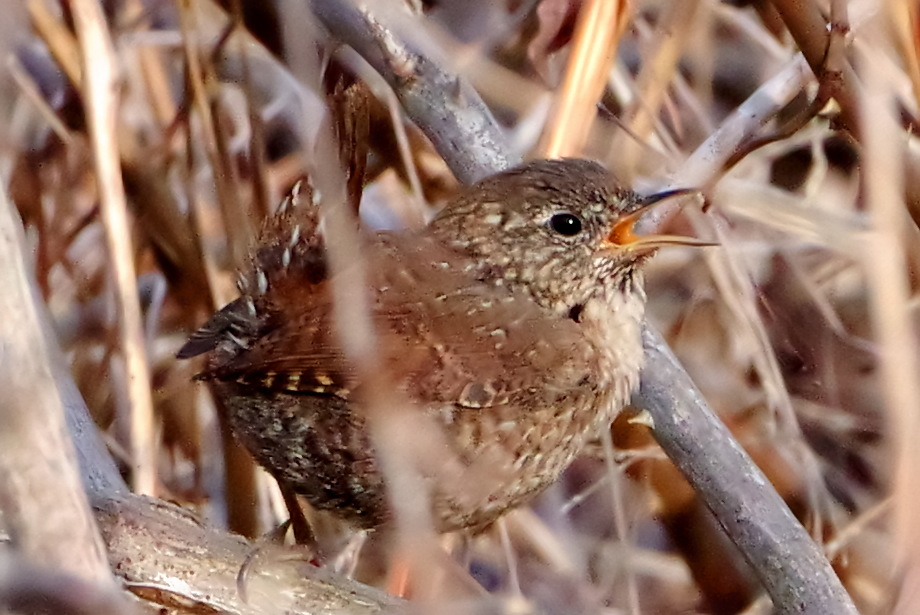This just happened in the neighbors backyard, and thanks to a timely text message I was able to get a photo.
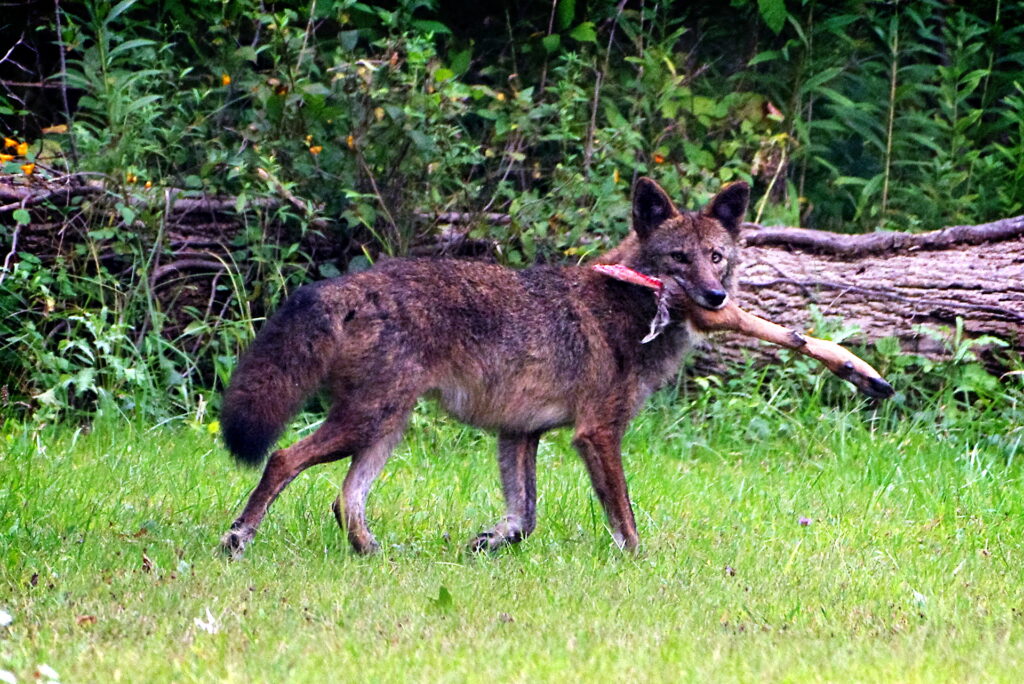
An Exploration of Nature
This small grasshopper was found on the leaf of a daylily in our landscaping. I know very little about grasshoppers, but I believe it to be a Clear-winged Grasshopper, which are widespread in North America but only found in the most northern areas of Ohio.
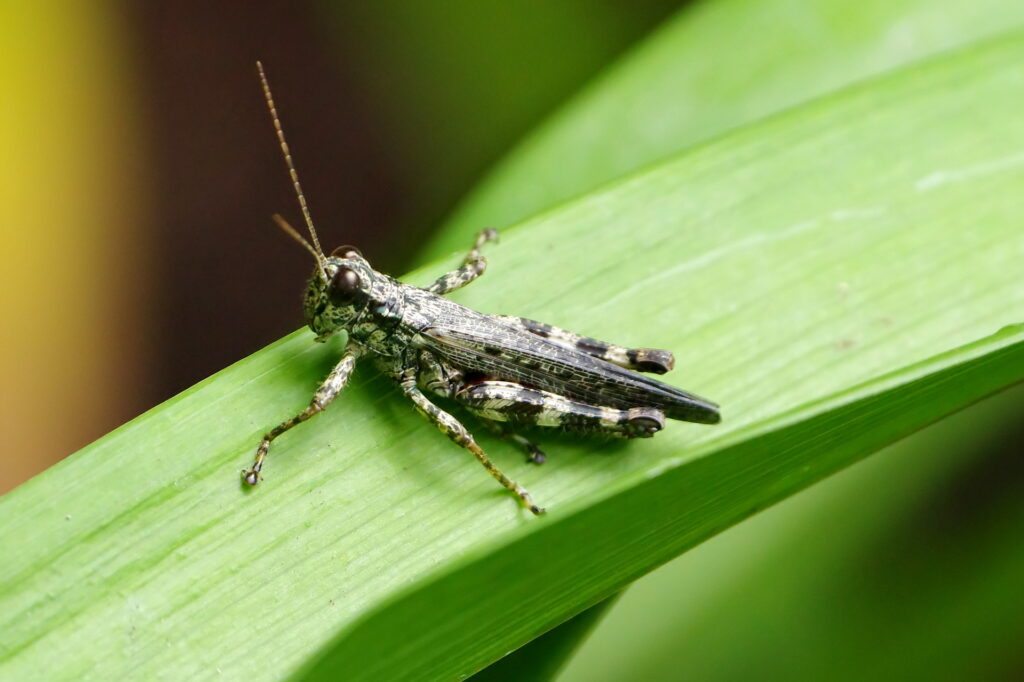
Dolichopodidae, or the long-legged flies, are a large family of “true flies” with more than 7,000 described species. Or so says wikipedia. They also tend to have beautiful metallic colors. These two were spotted on the pepper plants in my garden. I believe they were involved in a mating ritual or territorial dispute. The one in flight was performing a hovering/flyby act while the other watched.
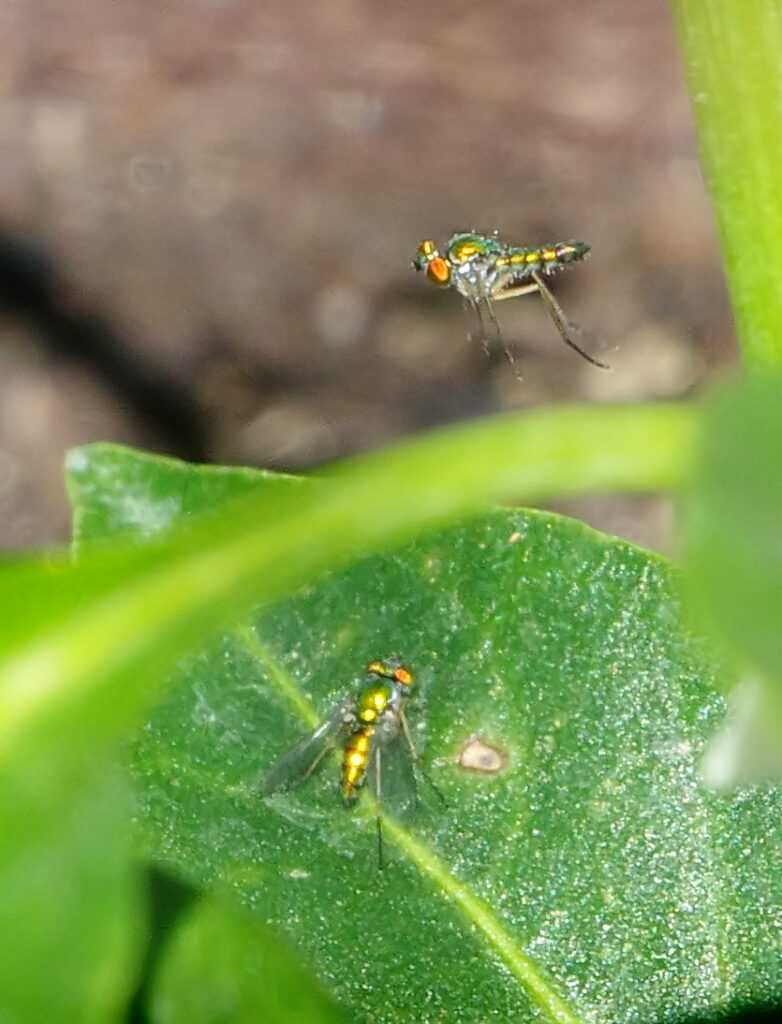
Long-legged flies are not garden pests, and may even be helpful. These were very small at around 5mm, and it was quite a challenge to get a picture with both of them, and in focus! However, there something else in the garden with them. It was an even smaller fly that I would estimate at 2-3mm, (possibly also Dolichopodidae), which I lost track of and was unable to photograph. Sad!
A new “life butterfly” for me today, thanks to my wife who spotted it first: Euphydryas phaeton, aka the Baltimore Checkerspot. This butterfly was incredibly cooperative and allowed me to take as many pictures as I needed to get a good one.
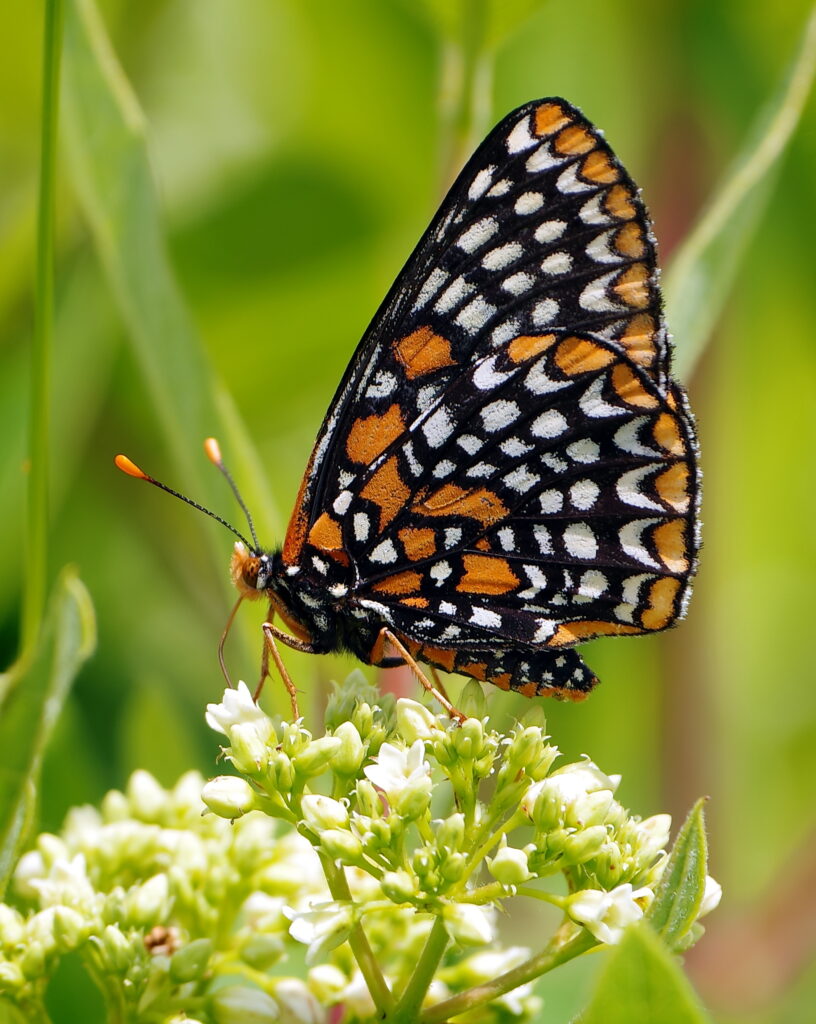
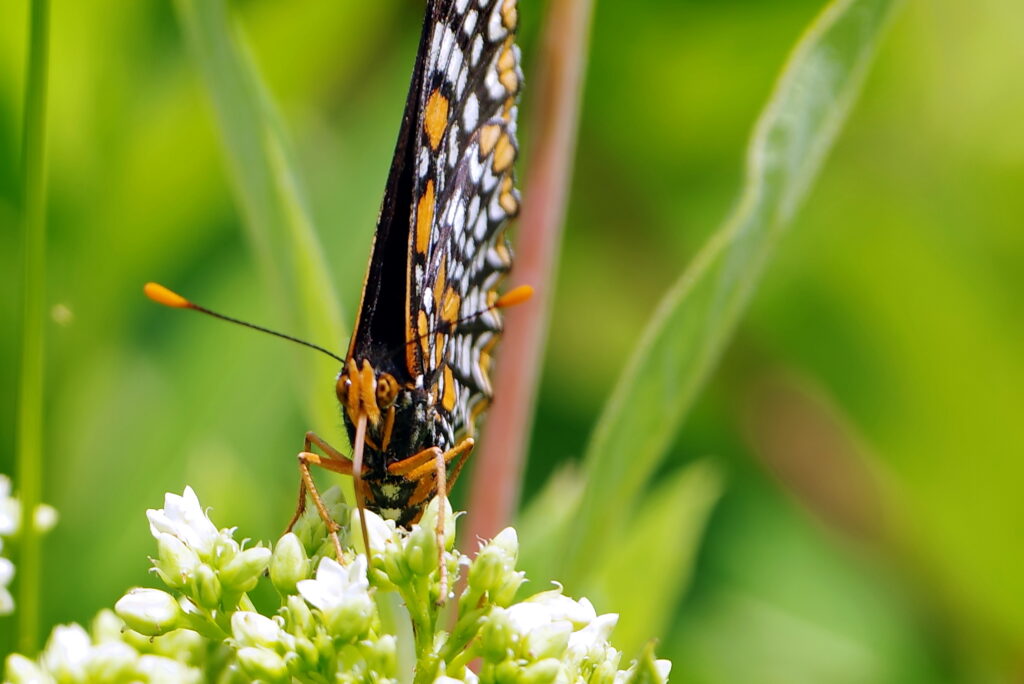
I’ve posted photos of this fly in the past, but this is the first time I’ve captured the male & female together, and definitely the first time I have seen a mating event. The mating flies are still capable of flight, and I had to chase this pair across the grass to get the photograph.
Very little is known about the Golden-backed Snipe Fly. Entomologists are not certain about where they lay their eggs, how many molts the fly larvae pass through, or even what they prefer to eat.
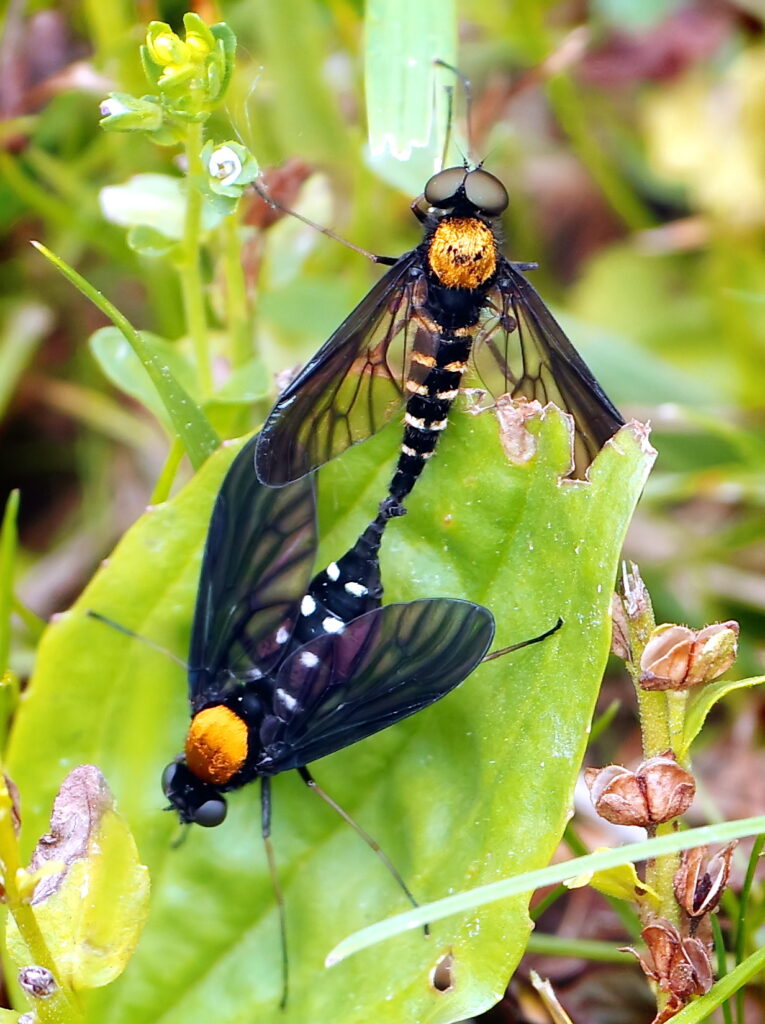
Bringing food to the nest.
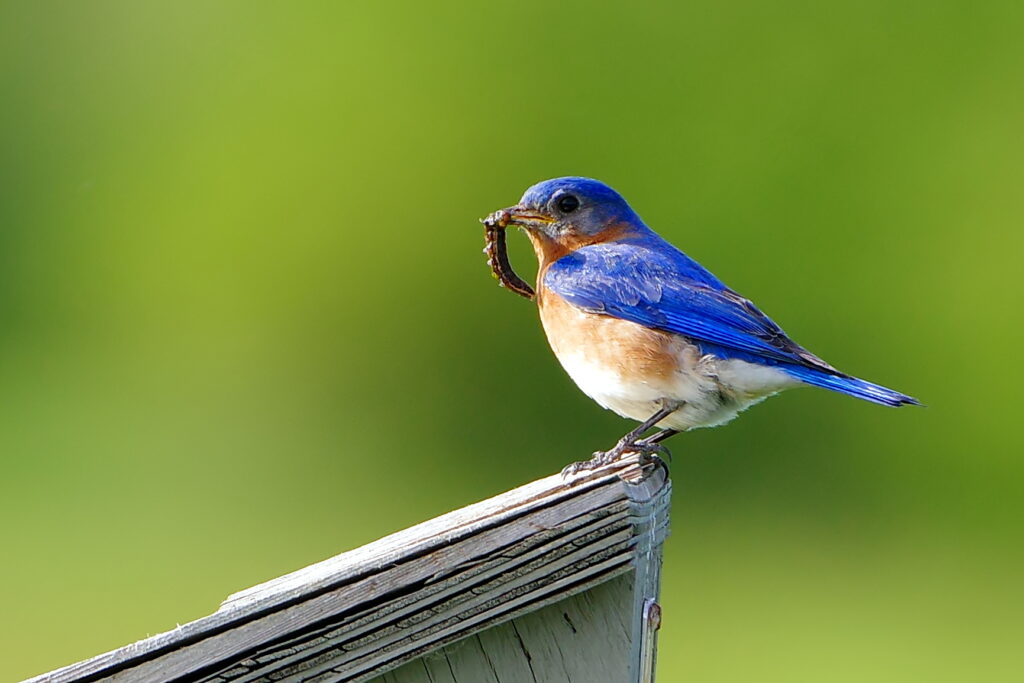
A group of Wood Ducks in formation over Bath Nature Preserve.
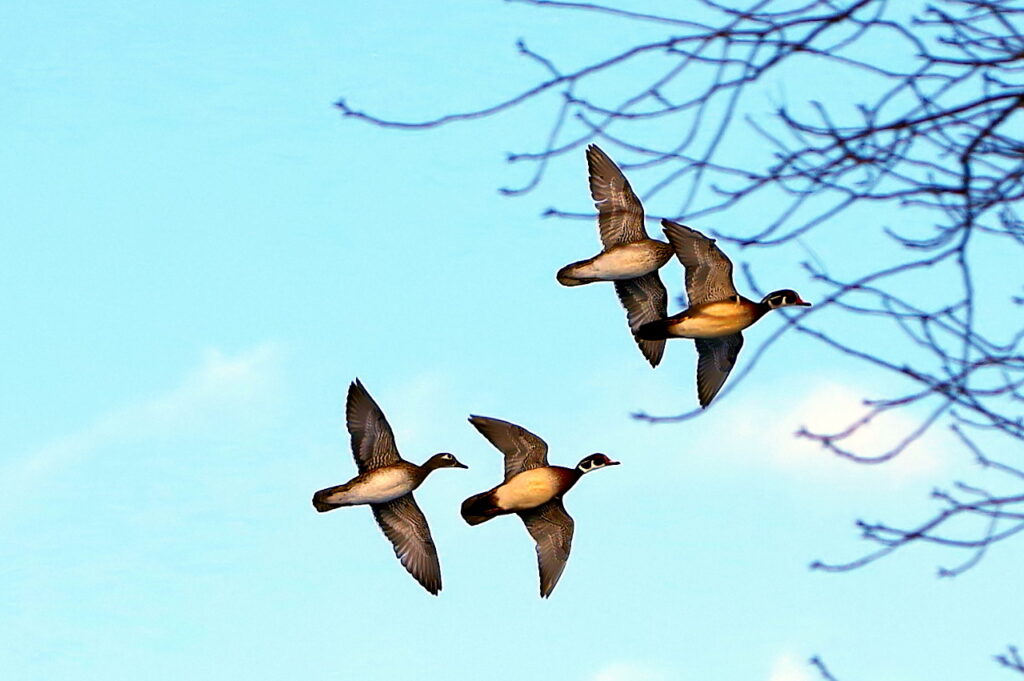
The name is not a misnomer; even though Spring is here this bird is still known as a “Winter Wren” no matter what time of year it is.
